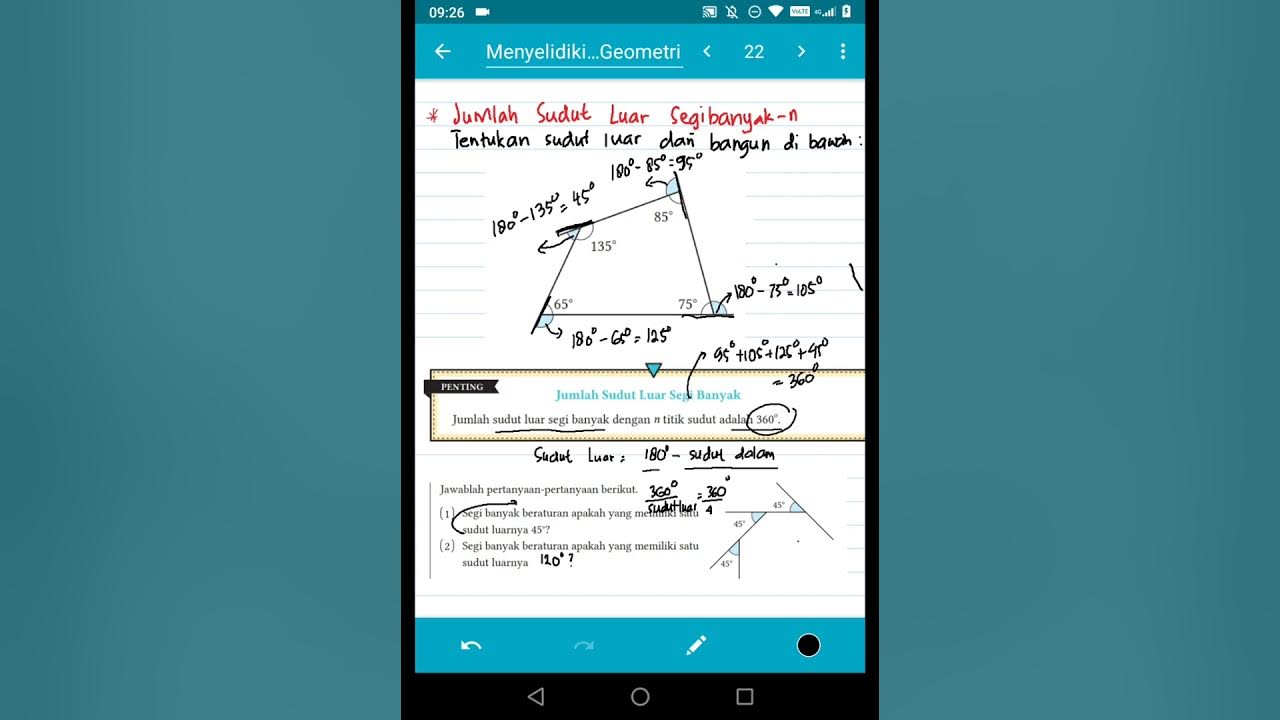Discrete Math - 6.3.2 Counting Rules Practice
Summary
TLDRIn this educational video, the speaker explores the concept of diagonals in polygons, focusing on how to calculate them systematically. Using a hexagon as a case study, they explain that each vertex can connect to other vertices except itself and its two adjacent vertices, leading to the formula 'n - 3' for the number of diagonals per vertex. By multiplying this by the number of vertices and dividing by two to account for double counting, the formula for finding diagonals in any polygon is established as (n * (n - 3)) / 2. The video concludes with a transition to the binomial theorem, indicating further mathematical exploration.
Takeaways
- 😀 The speaker discusses the concept of diagonals in polygons, focusing on the case of a hexagon.
- 📐 A diagonal connects two non-adjacent vertices of a polygon.
- 🔍 For any polygon with n sides, each vertex can draw n - 3 diagonals.
- ✏️ The initial total number of diagonals from all vertices is calculated as n times (n - 3).
- 🔄 Each diagonal is counted twice, so the final formula for the number of unique diagonals is n(n - 3) / 2.
- 📏 In the case of a hexagon (n = 6), the number of diagonals calculated is 9.
- ✔️ The derived formula can be used to verify the number of diagonals in any polygon.
- 🔗 The relationship between vertices and diagonals is crucial for understanding polygon geometry.
- 🧮 The speaker emphasizes the importance of visualizing the problem for better understanding.
- 📊 The discussion will transition to the binomial theorem in the next segment of the video.
Please replace the link and try again.
Outlines

This section is available to paid users only. Please upgrade to access this part.
Upgrade NowMindmap

This section is available to paid users only. Please upgrade to access this part.
Upgrade NowKeywords

This section is available to paid users only. Please upgrade to access this part.
Upgrade NowHighlights

This section is available to paid users only. Please upgrade to access this part.
Upgrade NowTranscripts

This section is available to paid users only. Please upgrade to access this part.
Upgrade Now5.0 / 5 (0 votes)





